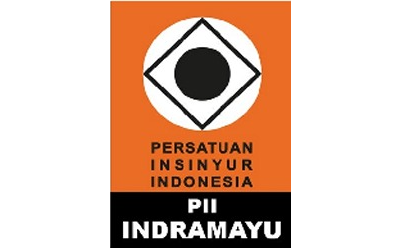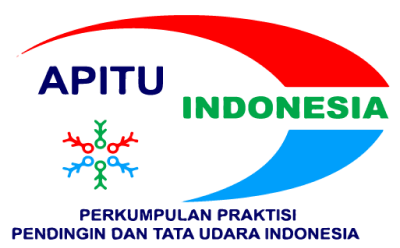KARAKTERISTIK POTENSI ANGIN SEBAGAI SUMBER ENERGI TERBARUKAN DI INDONESIA DARI DATA SATELIT REMOTE SENSING
Abstract
Full Text:
PDFReferences
Archer, C. L., & Jacobson, M. Z. (2005). Evaluation of global wind power. Journal of Geophysical Research: Atmospheres, 110(D12).
Bazilian, M., Onyeji, I., Liebreich, M., MacGill, I., Chase, J., Shah, J., & Zhengrong, S. (2013). Re-considering the economics of photovoltaic power. Renewable Energy, 53, 329-338.
Betz, A. (2013). The maximum of the theoretically possible exploitation of wind by means of a wind motor. Wind Engineering, 37(4), 441-446.
Coyle, E. D., & Simmons, R. A. (2014). Understanding the global energy crisis (p. 318). Purdue University Press.
Dhanju, A., Whitaker, P., & Kempton, W. (2008). Assessing offshore wind resources: An accessible methodology. Renewable Energy, 33(1), 55-64.
Doolan, C. J., Moreau, D. J., & Brooks, L. A. (2012). Wind turbine noise mechanisms and some concepts for its control. Acoustics Australia, 40(1).
Fikri, M. B., & Suryopratomo, I. K. (2013). Perancangan sudu turbin angin berkecepatan rendah dengan variasi tip speed ratio menggunakan metode momentum elemen sudu (Doctoral dissertation, Universitas Gadjah Mada).
Hansen, K. S., Barthelmie, R. J., Jensen, L. E., & Sommer, A. (2012). The impact of turbulence intensity and atmospheric stability on power deficits due to wind turbine wakes at Horns Rev wind farm. Wind Energy, 15(1), 183-196.
Jacobson, M. Z., & Archer, C. L. (2012). Saturation wind power potential and its implications for wind energy. Proceedings of the National Academy of Sciences.
Johnson, N., Krey, V., McCollum, D. L., Rao, S., Riahi, K., & Rogelj, J. (2015). Stranded on a low-carbon planet: Implications of climate policy for the phase-out of coal-based power plants. Technological Forecasting and Social Change, 90, 89-102.
Klocke, D., Brueck, M., Hohenegger, C., & Stevens, B. (2017). Rediscovery of the doldrums in storm-resolving simulations over the tropical Atlantic. Nature Geoscience, 10(12), 891.
Lei, M., Shiyan, L., Chuanwen, J., Hongling, L., & Yan, Z. (2009). A review on the forecasting of wind speed and generated power. Renewable and Sustainable Energy Reviews, 13(4), 915-920.
Lu, X., McElroy, M. B., & Kiviluoma, J. (2009). Global potential for wind-generated electricity. Proceedings of the National Academy of Sciences, 106(27), 10933-10938.
Lydia, M., Kumar, S. S., Selvakumar, A. I., & Kumar, G. E. P. (2014). A comprehensive review on wind turbine power curve modeling techniques. Renewable and Sustainable Energy Reviews, 30, 452-460.
Manwell, J. F., McGowan, J. G., & Rogers, A. L. (2010). Wind energy explained: theory, design and application. John Wiley & Sons.
Nicholson, S. E. (2018). The ITCZ and the seasonal cycle over equatorial Africa. Bulletin of the American Meteorological Society, 99(2), 337-348.
Patel, M. R. (2005). Wind and solar power systems: design, analysis, and operation. CRC press.
Pusdatin ESDM, (2014), Pusat Data dan Teknologi Informasi (Pusdatin) Kementerian Energi dan Sumber Daya Mineral (ESDM).
Pérez, J. M. P., Márquez, F. P. G., Tobias, A., & Papaelias, M. (2013). Wind turbine reliability analysis. Renewable and Sustainable Energy Reviews, 23, 463-472.
Ricciardulli, L., & Wentz, F. J. (2015). A scatterometer geophysical model function for climate-quality winds: QuikSCAT Ku-2011. Journal of Atmospheric and Oceanic Technology, 32(10), 1829-1846.
Sacuta, N., Young, A., & Worth, K. (2015). International Energy Agency (IEA) Greenhouse Gas (GHG) Weyburn-Midale CO₂ Monitoring and Storage Project. Petroleum Technology Research Centre Incorporated, Saskatchewan (Canada).
Schubel, P. J., & Crossley, R. J. (2012). Wind turbine blade design. Energies, 5(9), 3425-3449.
Singh, R. K., & Ahmed, M. R. (2013). Blade design and performance testing of a small wind turbine rotor for low wind speed applications. Renewable Energy, 50, 812-819.
Şen, Z. (2013). Modified wind power formulation and its comparison with Betz limits. International Journal of Energy Research, 37(8), 959-963.
Yin, X., Wang, Z., Song, Q., Huang, Y., & Zhang, R. (2017). Estimate of Ocean Wind Vectors Inside Tropical Cyclones From Polarimetric Radiometer. IEEE Journal of Selected Topics in Applied Earth Observations and Remote Sensing, 10(5), 1701-1714.
DOI: https://doi.org/10.31884/jtt.v5i1.164
Refbacks
- There are currently no refbacks.
Copyright (c) 2019 JTT (Jurnal Teknologi Terapan)

This work is licensed under a Creative Commons Attribution-NonCommercial-NoDerivatives 4.0 International License.
 Creative Common Attribution-ShareAlike 4.0 International (CC BY-SA 4.0)
Creative Common Attribution-ShareAlike 4.0 International (CC BY-SA 4.0)













